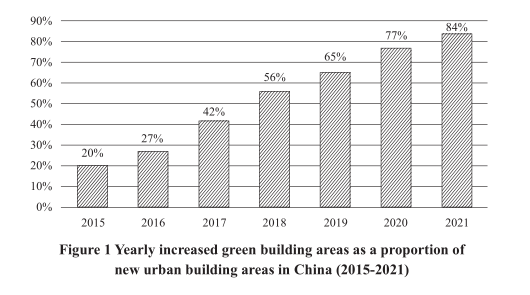

China is making efforts to optimize its governing system of territorial space. The country has strengthened the overall planning and coordinated management and control of territorial space for working and living and for the environment. It has intensified efforts to protect and restore ecosystems, effectively expanded the capacity of the eco-environment, and promoted the rapid accumulation of natural wealth and eco-environmental wealth, leading to historic, transformative, and comprehensive changes in eco-environmental protection and providing strong support for the sustainable and healthy development of the economy and society.
1.Optimizing the development and protection of territorial space
A country's territorial space is the carrier for green development. China has implemented a functional zoning strategy and established a unified territorial space planning system that is science-based, efficient and built upon clearly defined powers and responsibilities. Taking into consideration factors such as population distribution, regional economic structures, land use, and eco-environmental protection, it has planned for the development and protection of territorial space with a holistic approach, so as to achieve higher-quality and more sustainable development of its territorial space.
China has integrated different plans into a single master plan for territorial space development. Concerted efforts have been made to optimize the use of territorial space. China has strengthened the management of key ecosystem service zones and endeavored to prevent and control eco-environmental risks.
2. Strengthening eco-environmental conservation and restoration
A new type of protected area (PA) system has been set up. PAs are major platforms for eco-environmental conservation. China is developing a PA system with national parks as the mainstay, supported by nature reserves and supplemented by nature parks. It has created its first batch of five national parks - the Three-River-Source National Park, the Giant Panda National Park, the Northeast China Tiger and Leopard National Park, the Hainan Tropical Rainforest National Park, and the Wuyishan National Park. It is making steady progress in building national parks in environmentally important regions. As of the end of 2021, nearly 10,000 PAs of various types and levels had been established, covering more than 17 percent of China's land area, bringing under effective protection 90 percent of its natural terrestrial ecosystem types and 74 percent of key state-protected wildlife species.
Setting up scientific eco-environmental conservation red lines (ECRLs). More than 30 percent of China's land area- including integrated and optimized PAs - is now under the protection of ECRLs. Through drawing ECRLs and drafting ecological protection and restoration plans, the country has consolidated an overall eco-environmental conservation configuration composed of Three Eco-zones and Four Shelterbelts - the Qinghai-Tibet Plateau Eco-zone, the Yellow River Eco-zone (including the Loess Plateau Ecological Barrier), the Yangtze River Eco-zone(including the Sichuan-Yunnan Ecological Barrier), and the Northeast, North, South, and Coastal Shelterbelts.
Carrying out major projects for the conservation and restoration of key national ecosystems. From 2012 to 2021, 64 million hectares of trees were planted. During this period, desertification prevention and control was carried out over 18.53 million hectares of land, and 40 million hectares of land were improved through sowing grass, and more than 800,000 hectares of wetland were added or restored. In 2021, the forest coverage ratio hit 24 percent, while the forest stock volume grew to 19.5 billion cubic meters. Both figures represented 30 consecutive years of growth, making China the country with the highest growth in forest resources and the largest area of man-made forest. China is also the first country to realize zero net land degradation - its desertified and sandified areas are both shrinking, and this is helping the world to reach the global goal of zero net land degradation in 2030. Since 2000, China has led the world in greening the planet, contributing around one fourth of the newly added green areas in the world.
3. Promoting the green development of key regions
China gives full play to the guiding role of major strategies for regional development and the implementation of these strategies, based on prioritizing eco-environmental conservation and promoting green development. It works to build the key regions into pioneers and models in green development to boost green social and economic development across the country.
Pushing for breakthroughs in environmental protection in the coordinated development of the Beijing-Tianjin-Hebei region. In 2021, in 13 cities in the region, 74 percent of days had good air quality. This was an increase of 32 percentage points compared with 2013. Beijing has set an example in air quality control for the world.
Promoting well-coordinated environmental conservation and avoiding excessive development while developing the Yangtze River Economic Belt. Since 2018, unauthorized structures along 162 kilometers of the river banks have been demolished, more than 12 square kilometers along the banks have been revegetated, and 4,533 hectares have been returned to water. The water quality at the state-monitored sections of the mainstream of the Yangtze River has reached Grade II level (the second best level) for the past two years.
4. Building a beautiful home with a pleasant living environment
Urban and rural areas are the carriers of human settlements and activities. China integrates the philosophy of green development into urban and rural construction, and promotes beautiful cities and beautiful countryside initiatives. With priority given to environmental pollution control, China strives to improve the living environment to build a beautiful home featuring lush mountains, green fields, singing birds, and blossoming flowers.
Building beautiful cities featuring harmony between humanity and nature. From 2012 to 2021, green coverage of built-up urban areas increased from 39 percent to 42 percent, and the per capita area of park greenery has increased from 11.8 square meters to 14.78 square meters. Great efforts have been made to construct green and low-carbon buildings, and renovation of existing ones has been promoted, contributing to increasingly higher energy efficiency.

China is continuing to redevelop the whole rural living environment and steadily advancing the construction of modern and livable homes with sanitary toilets in rural areas, strengthening the treatment and recycling of domestic waste and sewage. As a result, more and more rural areas have access to safe and clean water, paved roads, streetlights, and clean energy.
Taking further steps to prevent and control pollution. The environment has a significant impact on quality of life. Green mountains display beauty, and blue skies bring happiness. China is curbing pollution in a law-based, scientific, and targeted way. Priority has been given to addressing the thorniest problems of air, water and soil contamination that are of greatest concern to the public. Effective measures have been taken to keep skies blue, waters clear, and land pollution-free. The mechanism of coordinated prevention and control across regions and approaches in dealing with heavy air pollution have achieved remarkable results. The average PM2.5 density of China's cities at prefecture level and above dropped from 46 micrograms per cubic meter in 2015 to 30 micrograms per cubic meter in 2021. On 87.5 percent of the days in 2021, people enjoyed good air quality. China is making the fastest progress in air quality improvement. With an accelerated pace in curbing industrial, agricultural and domestic pollution sources, and in regulating water ecological systems, China has significantly reduced seriously polluted water bodies and sub-standard water bodies, and the safety of drinking water is ensured. In 2021, the proportion of surface water at or above Grade III in the country's five-tier water quality system reached 84.9 percent. China has banned the import of foreign waste, fulfilling its goal of "zero import" of solid waste while basically bringing the threat of soil contamination under control. Brilliant blue skies are dotted with white clouds during the day; when the sun sets, twinkling stars pattern the firmament. The shores are Panel 5 Improving Urban and Rural Environmental Infrastructure China attaches great importance to the construction of environmental infrastructure and strives to address areas of weaknesses, optimize layouts, and improve quality. It has improved facilities for sewage collection, treatment, and recycling, and boosted the classification and treatment capacity of domestic waste. China has also worked to ensure the safe and effective disposal of solid waste, hazardous waste, and medical waste, promoted the integrated, intelligent, and green development of environmental infrastructure, and built a system of environmental infrastructure that integrates facilities and monitoring and supervising capabilities for the treatment and disposal of sewage, garbage, solid waste, hazardous waste, and medical waste. An environmental infrastructure network extending from cities to towns and villages has taken shape. By the end of 2021, the sewage treatment capacity of cities and counties has reached 247 million cubic meters per day, the incineration treatment capacity of urban domestic waste exceeded 770,000 tonnes per day, and the harmless treatment rate of urban domestic waste was close to 100 percent.
Edited by Bao Lianying
with reference to <http://www.scio.gov.cn/zfbps/32832/Document/1735712/1735712.htm#10006-weixin-1-52626-6b3bffd01fdde4900130bc5a2751b6d1>